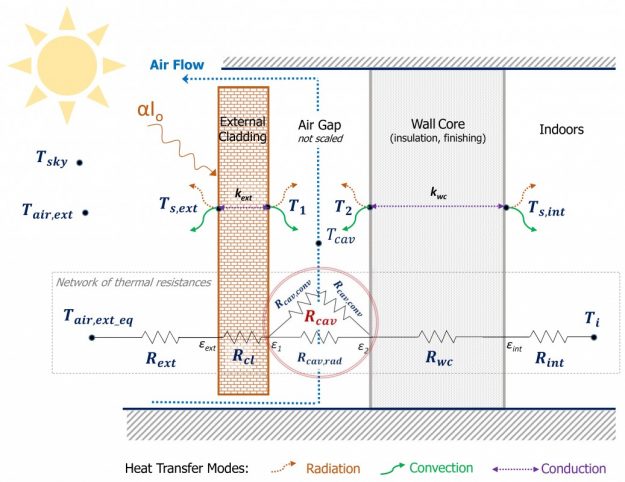The heat transfer requirements for opaque building components are generally prescriptive and given as static values in building performance standards. However, the thermal resistance (U-value) of the building walls with air spaces incorporated behind the exterior cladding is dynamic in nature due to the dynamic thermo-hydraulic behaviour of the air inside the ventilated air gap. This study quantifies the effects of air change rates on the thermal resistance of vertical air spaces behind common types of ventilated wall structures by performing the following tasks:
- Overview of existing methods for predicting air exchange rates behind ventilated coatings such as brick veneer and vinyl siding.
- Identify the factors that influence air change rates, perform a parametric study and determine the weighting of each factor to the thermal resistance of the air gap.
Based on the parametric study performed, test and design recommendations will be made to take into account the impact of ventilation air flow on the thermal resistance of vertical spaces behind the cladding surfaces.
